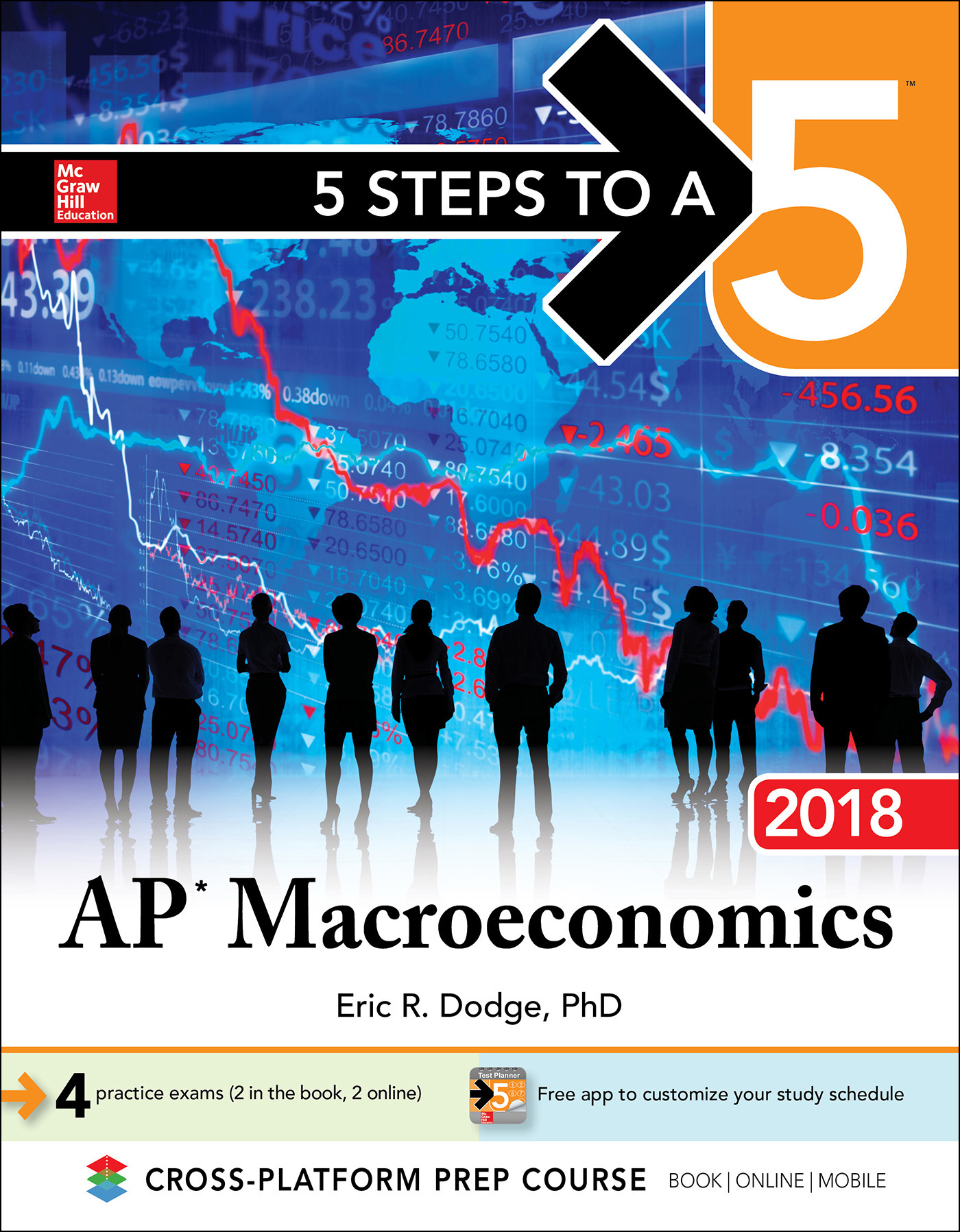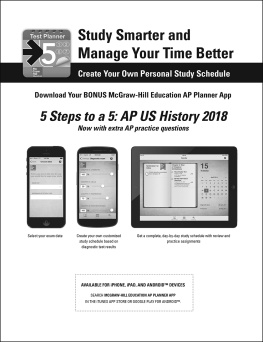Contents
Guide
Page List


Copyright 2017 by McGraw-Hill Education. All rights reserved. Except as permitted under the United States Copyright Act of 1976, no part of this publication may be reproduced or distributed in any form or by any means, or stored in a database or retrieval system, without the prior written permission of the publisher.
ISBN: 978-1-25-986387-5
MHID: 1-25-986387-5.
The material in this eBook also appears in the print version of this title: ISBN: 978-1-25-986386-8, MHID: 1-25-986386-7.
eBook conversion by codeMantra
Version 1.0
All trademarks are trademarks of their respective owners. Rather than put a trademark symbol after every occurrence of a trademarked name, we use names in an editorial fashion only, and to the benefit of the trademark owner, with no intention of infringement of the trademark. Where such designations appear in this book, they have been printed with initial caps.
McGraw-Hill Education eBooks are available at special quantity discounts to use as premiums and sales promotions or for use in corporate training programs. To contact a representative, please visit the Contact Us page at www.mhprofessional.com.
Trademarks: McGraw-Hill Education, the McGraw-Hill Education logo, 5 Steps to a 5, and related trade dress are trademarks or registered trademarks of the McGraw-Hill Education and/or its affiliates in the United States and other countries and may not be used without written permission. All other trademarks are the property of their respective owners. McGraw-Hill Education is not associated with any product or vendor mentioned in this book.
AP, Advanced Placement Program, and College Board are registered trademarks of the College Board, which was not involved in the production of, and does not endorse, this product.
The series editor was Grace Freedson, and the project editor was Del Franz. Series design by Jane Tenenbaum.
TERMS OF USE
This is a copyrighted work and McGraw-Hill Education and its licensors reserve all rights in and to the work. Use of this work is subject to these terms. Except as permitted under the Copyright Act of 1976 and the right to store and retrieve one copy of the work, you may not decompile, disassemble, reverse engineer, reproduce, modify, create derivative works based upon, transmit, distribute, disseminate, sell, publish or sublicense the work or any part of it without McGraw-Hill Educations prior consent. You may use the work for your own noncommercial and personal use; any other use of the work is strictly prohibited. Your right to use the work may be terminated if you fail to comply with these terms.
THE WORK IS PROVIDED AS IS. McGRAW-HILL EDUCATION AND ITS LICENSORS MAKE NO GUARANTEES OR WARRANTIES AS TO THE ACCURACY, ADEQUACY OR COMPLETENESS OF OR RESULTS TO BE OBTAINED FROM USING THE WORK, INCLUDING ANY INFORMATION THAT CAN BE ACCESSED THROUGH THE WORK VIA HYPERLINK OR OTHERWISE, AND EXPRESSLY DISCLAIM ANY WARRANTY, EXPRESS OR IMPLIED, INCLUDING BUT NOT LIMITED TO IMPLIED WARRANTIES OF MERCHANTABILITY OR FITNESS FOR A PARTICULAR PURPOSE. McGraw-Hill Education and its licensors do not warrant or guarantee that the functions contained in the work will meet your requirements or that its operation will be uninterrupted or error free. Neither McGraw-Hill Education nor its licensors shall be liable to you or anyone else for any inaccuracy, error or omission, regardless of cause, in the work or for any damages resulting therefrom. McGraw-Hill Education has no responsibility for the content of any information accessed through the work. Under no circumstances shall McGraw-Hill Education and/or its licensors be liable for any indirect, incidental, special, punitive, consequential or similar damages that result from the use of or inability to use the work, even if any of them has been advised of the possibility of such damages. This limitation of liability shall apply to any claim or cause whatsoever whether such claim or cause arises in contract, tort or otherwise.
CONTENTS
PREFACE
So, youve decided to bite the bullet and invest in a book designed to help you earn a 5 on your AP Macroeconomics exam. Congratulations! You have taken the first of many small steps toward this goal. An important question remains: Why this book?
Priority number one, both for your AP course and for this book, is to prepare you to do well enough on the AP Macroeconomics exam to earn college credit. I firmly believe that this book has a comparative advantage over your other options. First, I have written this text with a certain conversational approach, rather than a flurry of formulas and diagrams that you must remember. Sure, some memorization is required for any standardized test, but a memorizer of formulas is in deep trouble when asked to analyze the relative success of several possible economic policies or to draw fine distinctions between competing economic theories. Using this book to supplement and reinforce your understanding of the theories and relationships in economics allows you to apply your analytical skills to the exam, and this gives you a significant advantage over the formula-memorizing exam taker. If you spend less time memorizing formulas and take the extra time to understand the basics, you will get along just fine with this book, and you will do extremely well on the AP Macroeconomics exam.
Second, as a college professor who has taught economics to thousands of students, I have a strong understanding of where the learning happens and where the mistakes are made.
Third, as a reader and writer of AP exams, I can tell you where points are lost and where a 5 is made on the free-response questions. Most important, I am a realist. You want to know what it takes to earn a 5 and not necessarily the finer points of the Federal Reserve System, the Sherman Antitrust Act, or the NAFTA.
Take the time to read the first four chapters of this book, which are designed to help you understand the challenge that lies ahead and to provide you with tips for success on the exam.
Take the diagnostic exam to see where you stand before beginning your review. The bulk of this book is a comprehensive review of macroeconomics with practice questions at the end of each chapter. These questions are designed to quickly test your understanding of the material presented in each chapter, not necessarily to mirror the AP exam. For exam questions that are more typical of what you will experience in May, I have provided you with two practice exams in macroeconomics, complete with essay questions, sample responses, and scoring guidelines.
Since the first edition of the book, several updates have been made to adapt to changes in the AP Macroeconomics exams. Earlier editions expanded coverage of the balance of payments and provided an explanation for how changes to the current account affect changes to the capital account. In the last edition, I added an alternative approach to how government deficits affect the market for loanable funds. This demand side treatment of the loanable funds market has since become the preferred way of modeling the crowding-out effect, and because it has the advantage of being much more intuitive, I have emphasized it rather than the original supply-side approach in this edition. I have also included more graphical coverage of the model of aggregate demand and aggregate supply, with an emphasis on the theoretical treatment of the adjustment from short-run to long-run equilibrium.




